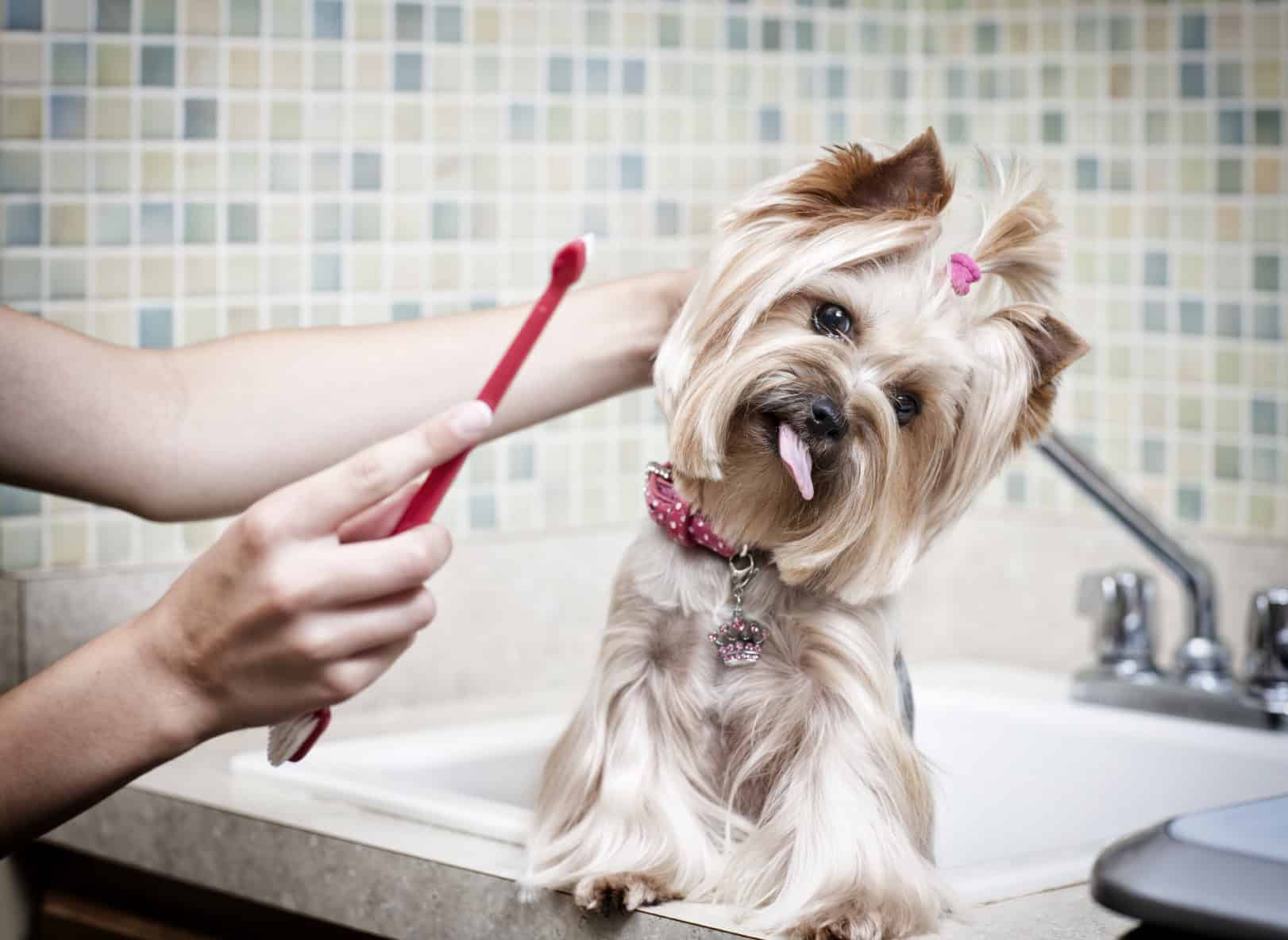Pet Dental Care: Why It’s Essential
 Is improving your pet’s dental health on your list of new year’s resolutions? If not, it should be! Where once we relied exclusively on bones or hard kibble to keep our pet’s chompers healthy, we now know that daily dental care, pet dental examinations, and teeth cleaning are essential components to your pet’s overall health.
Is improving your pet’s dental health on your list of new year’s resolutions? If not, it should be! Where once we relied exclusively on bones or hard kibble to keep our pet’s chompers healthy, we now know that daily dental care, pet dental examinations, and teeth cleaning are essential components to your pet’s overall health.
Attending to your pet’s dental and oral hygiene goes a long way in combating numerous diseases that not only affect the gums and teeth but also the organs and systems of the body.
Common Pet Dental Disease
- Worn, broken, or fractured teeth
- Lesions and abscesses
- Periodontal disease
- Gingivitis
- Tooth resorption
While many of these diseases create pain and discomfort, leaving them unaddressed can lead to serious and life-threatening infections that spread to the heart and other vital organs.
At-Home Pet Dental Care
At-home dental care is a must for keeping your pet’s teeth free from plaque and tartar build-up. However, when you first begin to tackle your pet’s daily dental care, you may be worried about your cat or dog’s comfort or even willingness to cooperate. But, brushing your pet’s teeth does not need to be as daunting as it seems.
Here are a few tips to get you started so you’ll be brushing those teeth like a pro in no time!
- Purchase a toothbrush or cleaning tool and toothpaste designed specifically for your cat or dog (a perk: most are formulated to taste delicious). Keep in mind that human toothpastes are toxic to pets, so please buy a product that is formulated for pets.
- Choose a well-lit room (with a raised surface for smaller pets) where you can see your pet’s teeth and gum line while you are brushing those pearly whites.
- Have patience and start slow; add a dab of the flavored toothpaste to your finger and let your pet sniff and taste it while you praise him or her. That may be enough for the first day or two.
- If your pet seems calm, proceed by introducing the toothbrush or tool and gently brush at a 45 degree angle in a circular motion, focusing on the outer regions of your pet’s teeth. Don’t worry about opening your pet’s mouth at this point.
- Don’t forget to praise, praise praise!
- Once you’ve acclimated your pet to the sensations of teeth brushing, you can begin to gently open his or her mouth to reach those inner areas of the teeth.
- Use caution when opening your pet’s mouth. The best approach is to gently wrap your index finger and thumb across the top of the nose while curling the upper lip. Use the same technique for the lower teeth, but gently cup the muzzle or jaw instead.
- As you are brushing, look for signs of discoloration, redness, swelling, and broken or worn teeth.
- Once you are finished, praise your cat or dog and offer extra attention, cuddles, or playtime as a reward.
Professional Care – Pet Dentistry
Since there are many oral and dental diseases and conditions that are difficult to detect, it’s imperative to keep your pet’s routine wellness appointments. During this time we can more thoroughly assess your pet’s oral health and recommend safe teeth cleaning when amounts of plaque and tartar have built up. We can also help instruct you on pet teeth brushing techniques and advise you on nutrition and chewable items that are formulated for dental health.
Because we so strongly believe in the advantages of pet dental care in preventing disease and extending the life of your pet, we want to offer you a $60 discount on all cat or dog dental services until March 31st. Please call or visit us online to schedule your pet’s appointment and learn more about the benefits of Rocklin Ranch Veterinary Hospital’s pet dental care capabilities.
We look forward to seeing you and your pet soon!

